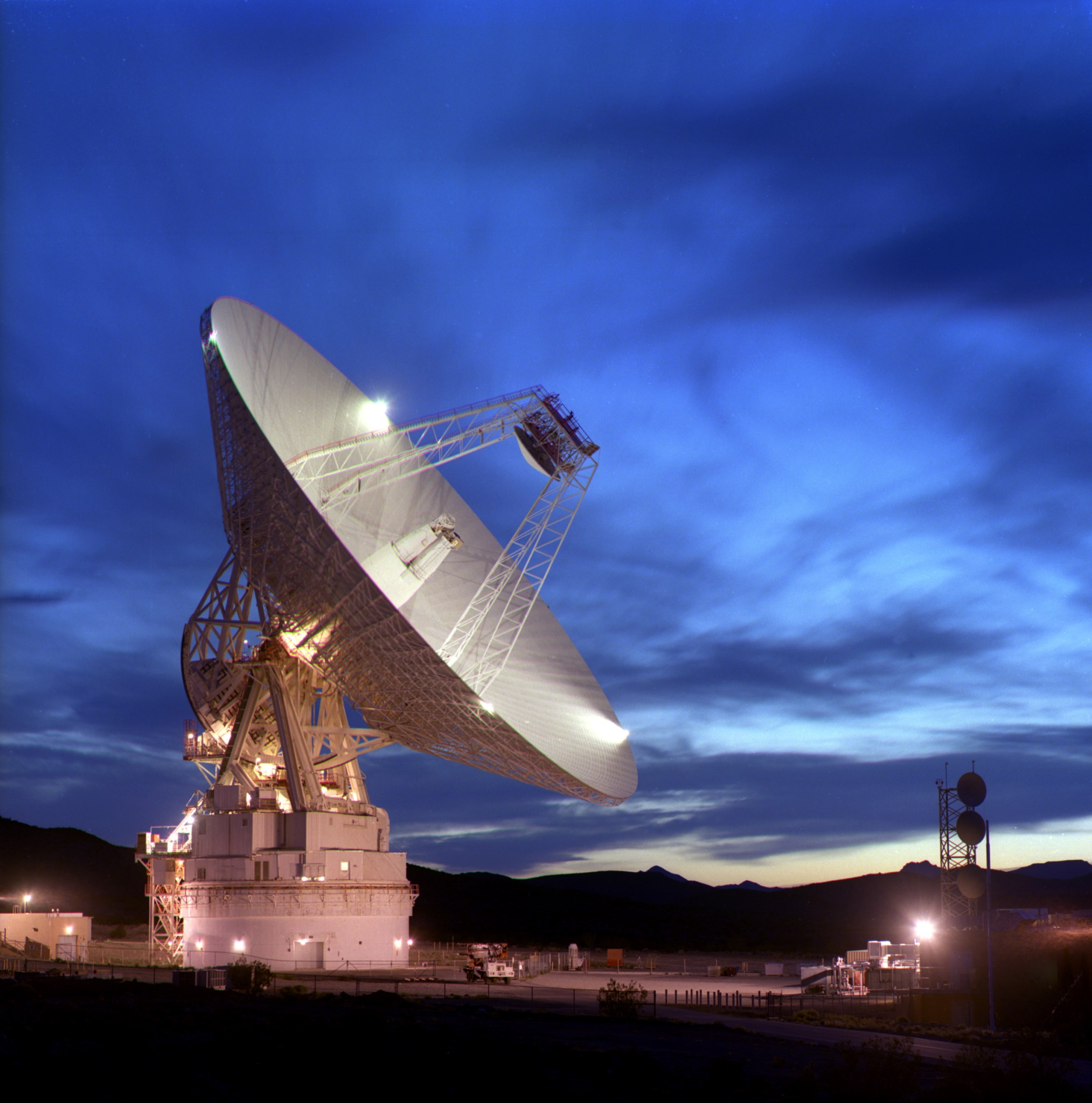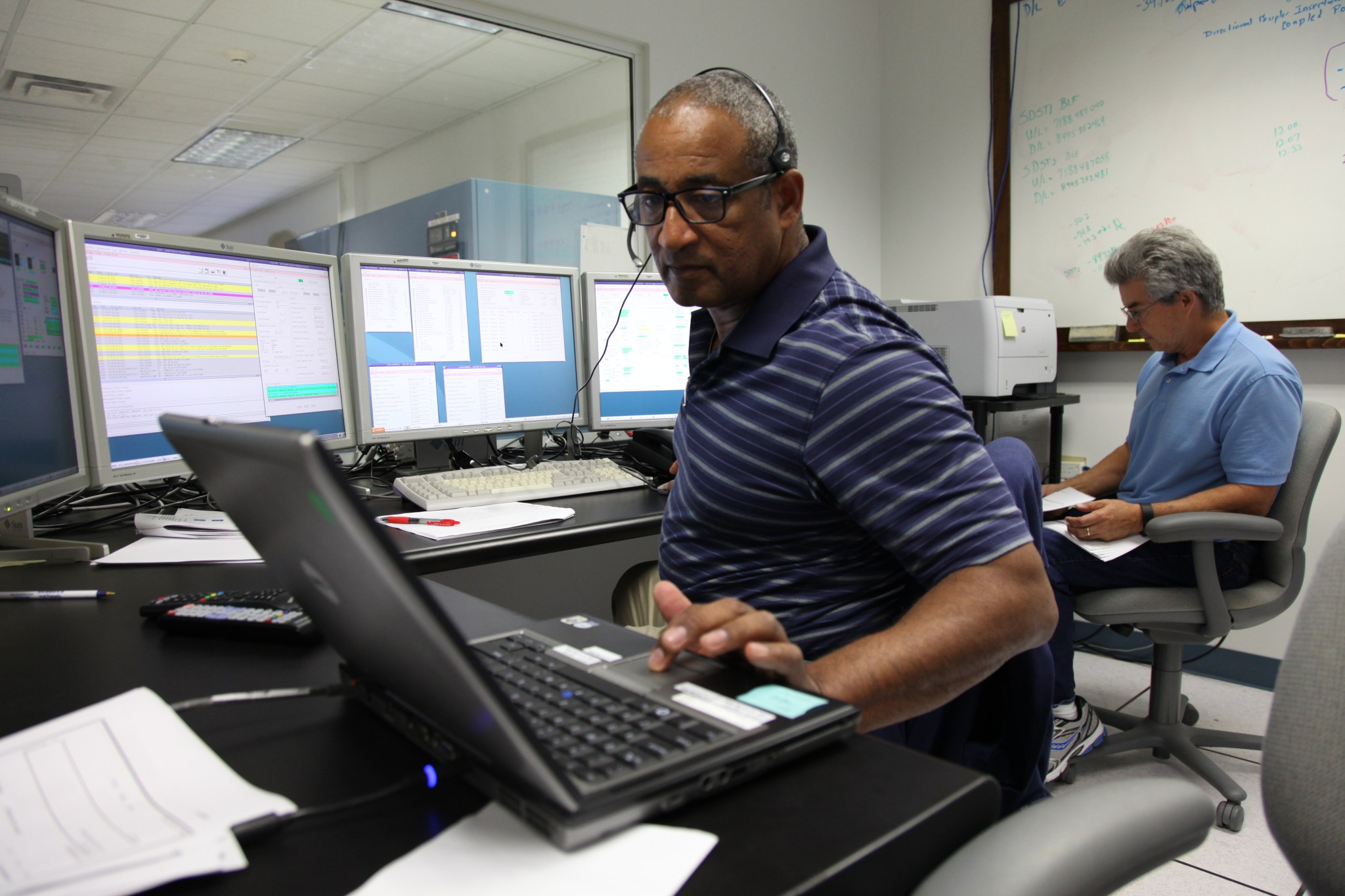A spacecraft designed to map the surface of an asteroid and then gather a sample from its surface will have plenty of information to share with scientists back on Earth during the next seven years, so engineers spent more than a week at NASA’s Kennedy Space Center in Florida making sure the spacecraft’s antennas, transmitters and other technical equipment will be up to the task.
The communications system testing will be the last for the OSIRIS-REx spacecraft before it is packaged into launch configuration and trucked to Space Launch Complex-41 where it will be positioned on the nose of an Atlas V rocket and sent into space in early September. Once on its way to an asteroid dubbed Bennu, the spacecraft will unfold its power-generating solar arrays and start sending back reports to Earth that will be picked up by NASA’s Deep Space Network.
The Deep Space Network has three stations around the world: one in Goldstone, California, one in Spain and one in Canberra, Australia. Each has several of the largest movable communications antennas anywhere, including 230-foot-diameter dishes. They have to be huge because the spacecraft they are talking to are using antennas that are sometimes as small as a pizza box. Add to that the fact that signal strength drops quickly as NASA’s robotic probes speed away from Earth and the challenge to engineers becomes apparent quickly.
“If you are communicating over distances on the order of the distance from the Earth to the sun, that is billions of times harder than communicating with a communications satellite,” said Laif Swanson, the mission interface manager for OSIRIS-Rex. “That’s why we need the Deep Space Network.”
It will take two years for the spacecraft to reach the 1,614 -foot diameter asteroid and begin mapping it. Toward the end of its time at the asteroid, the spacecraft will steer in close enough to the primitive chunk of rock to collect up to four pounds of soil and material from its surface. That soil will be placed in a capsule and the spacecraft will start a two-year journey back to Earth to drop the capsule off. From there, the scientists on the ground will study the material to find out what secrets of the solar system’s creation the asteroid could reveal.
It’s a complicated mission with lots of crucial commands from Earth needed to execute the mission, plus vital research details to be transmitted back. That’s why the communications apparatus the mission will count on is not taken for granted. Although the spacecraft’s systems were tested when it was built by Lockheed Martin in Denver, NASA also tested the spacecraft ahead of its liftoff.
“Ultimately we do not want a spacecraft going up and losing comm with it,” said Randy Barter, a test engineer for the Deep Space Network. “We check areas of the spacecraft that include can we command it, can we determine the distance and to see how low the power rating is that we can communicate with the spacecraft. We see that program engineers can send commands from their side and command the spacecraft.”
That is where a squat, spread-out building at Kennedy known as MIL-71 comes in. Its name harkens back to the time when Kennedy was known as the Merritt Island Launch Annex, or MILA. Communications systems allow only three letters, so it was shortened the MIL. In much the same way, the asteroid sampling mission is known in Deep Space Network and communications circles by its own three-letter acronym, ORX, instead of the much longer version.
It takes a roomful of specialized gear to perform the testing which calls for simulating the vast distances of space though the spacecraft and instruments are in buildings next door to each other. The team heads back to California soon to prepare for the mission and get ready to use it for launch. They won’t know until about 20 minutes after liftoff whether their testing was performed correctly and the spacecraft will effectively communicate with Earth. It is around that time that the OSIRIS-REx will separate from the upper stage of the Atlas V rocket. Assuming they get a signal like they expect, the spacecraft will unfurl its solar arrays and head for the asteroid, keeping Earth updated to the progress throughout its journey.





























